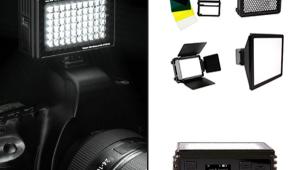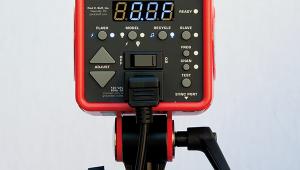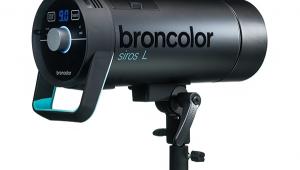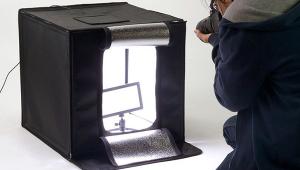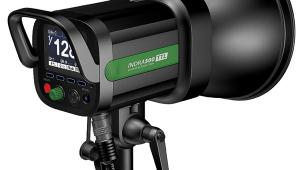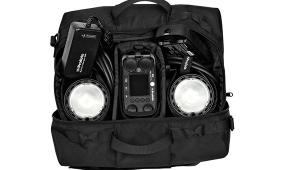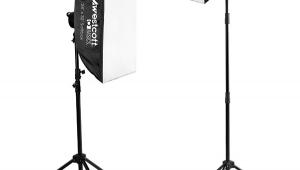Larson’s Larry Peters 16x60 Light Bender: A Uniquely Shaped Softbox
We all know what softboxes look like. They’re big, small, square, rectangular, sometimes round or shaped like octagons—we’ve seen them all. But there is nothing quite like the 16x60 Light Bender from Larson. It is long (48”), narrow (12”), and looks like a strip light that someone grabbed by the ends and yanked toward the middle. In this test I’ll take a look at just what this oddly-shaped light can do and why a photographer may consider adding it to his or her arsenal of light modifiers.

The Light Bender was designed by well-known photographer Larry Peters from Ohio and is produced and sold by Larson Enterprises.
After unpacking, I mounted the box to the backplate, a really snug fit, and then added the speed ring that allows me to mount and swivel the box on my light. After assembly, I mounted it on my Paul C. Buff Einstein unit. The light mounts dead center and the “wings” fly out to the side. There is no interior baffle in the design so the light is much stronger in the center and drops off rather dramatically as you move toward the edges.
“Traditional” Softbox
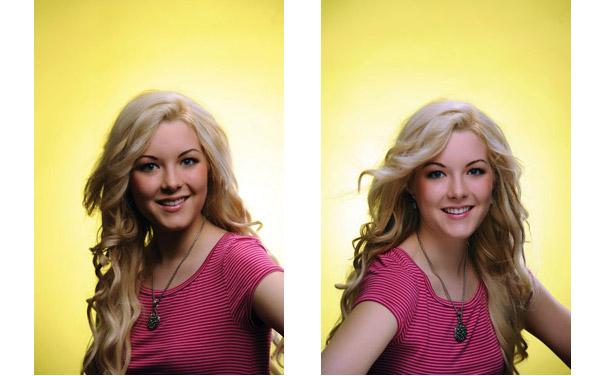
All Photos © Steve Bedell
Before testing I spoke with Larry about the Light Bender and he said it produced an amazing light when combined with his Eyelighter, another one of his products that is a specially designed reflector for producing a unique light shape in the eye when used with a top light. I did not have one of these for the test, but did use a silver reflector from underneath with very good results. Larry also said it was designed to be used horizontally so of course I used it both ways.
Light Bender
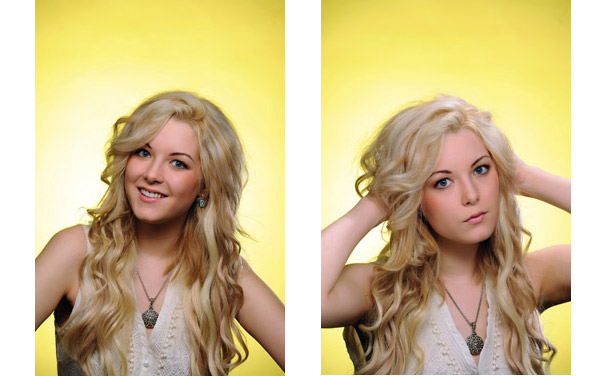
One of the first things I did was to see how the light from the Light Bender compared to the light from a typical softbox. I mounted a 3x4 softbox on an arm and positioned it above my model’s head. I then took images using both boxes with and without a reflector to see if they looked any different. They did, especially the ones where a reflector wasn’t used as a fill from below. It appears that by tilting the box down toward your subject, the light from the wings is down lower and on the sides so it actually acts as a weak fill, lightening up under the neck. Those side lights also fill in the sides of the face and hair. Used with a reflector, it created a very soft, creamy light that is quite unique.
Catchlights
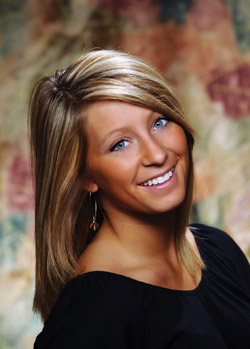
Side-by-side comparison shots show a very different character to the light.
Full Length

I must admit that when I first saw this light I considered that it could be a “gimmick.” Who needs a softbox shaped like a horseshoe? And would the light it produced really be that much different? After testing I can tell you that the light it produces is very unique and is especially suited for in-close glamour headshots. Combined with a bottom reflector, it makes creating beauty shots a pretty simple process. In all, I consider it a very worthwhile addition to any photographer’s lighting arsenal.
Portraits

The 16x60 Light Bender costs $425, while the 12x48 version is $325. For more information, contact Larson Enterprises at: www.larson-ent.com.
Steve Bedell has been a portrait photographer for over 25 years. To subscribe to EPhoto, a free e-mail newsletter with tips for photographers, contact Bedell via e-mail at: sb@stevebedell.com. Also ask about his lighting DVDs.


